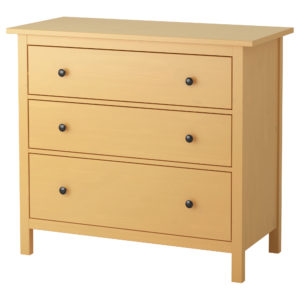 I recently read a nice article discussing indoor air pollution, which can be worse than outdoor air, even that of cities. Yes, that's true! In past posts I've discussed problems (and health issues) with air fresheners, fragrances, incense, dryer sheets, scented candles, synthetic rugs, "stain-proofing", and flame retardants in upholstery, but this article is about furniture and how it can emit various chemicals ("outgassing"), especially when new. Think of all the stains, glues, paints, etc. used in making furniture.
I recently read a nice article discussing indoor air pollution, which can be worse than outdoor air, even that of cities. Yes, that's true! In past posts I've discussed problems (and health issues) with air fresheners, fragrances, incense, dryer sheets, scented candles, synthetic rugs, "stain-proofing", and flame retardants in upholstery, but this article is about furniture and how it can emit various chemicals ("outgassing"), especially when new. Think of all the stains, glues, paints, etc. used in making furniture.
The article points out that when buying new furniture, can look to see if it is certified by Greenguard or SCS Global Services as having low or no emissions of hazardous chemicals. Another thing to do is avoid particle board, engineered wood, or pressed wood (frequently emits formaldehyde, a carcinogen). But in the mean time - it's generally a good idea to frequently get fresh air in your residence by opening windows for a while. Excerpt's from E. Leamy's article in the Washington Post:
Your furnishings could be causing indoor air pollution
We feel safe in our homes, but that can be a false sense of security. The threat I’m talking about is something we can’t see: indoor air pollution. The air in our homes and workplaces can be more polluted than outdoor air in the most industrialized cities, according to the Environmental Protection Agency. The EPA says the problem is compounded by the fact that Americans spend 90 percent of their time indoors. Many different things can cause indoor air pollution, and they have a cumulative effect on our health.
Let’s look at one of those possible sources: our furnishings. Yes, your new carpet or cabinet could be subtly poisoning you with chemicals such as benzene, ethylene glycol or formaldehyde. It’s called “off-gassing.” Four of the top 10 chemicals emitted from furnishings are considered “acute” hazards, or irritants. “Poor indoor air quality can cause or contribute to the development of infections, lung cancer and chronic lung diseases such as asthma,” according to the American Lung Association.
How do researchers know that some furnishings emit harmful gaseous chemicals? Greenguard, a division of UL Environment, has developed a way of testing furniture to find out. In a generic-looking office park outside Atlanta, researchers heft furniture into giant, airtight chambers. .... Greenguard developed the testing method so manufacturers who wanted to sell low-emission furniture could prove their products were healthier. UL awards its Greenguard certification to furniture that emits low or no levels of hazardous chemicals.
Manufacturers don’t have to state what chemicals they use in their furnishings. The EPA singles out engineered wood — otherwise known as particleboard — as being particularly prone to emitting formaldehyde, a probable carcinogen. UL Environment adds that products that are applied wet, such as glues and paints, often off-gas while they are curing. Sometimes a strong industrial odor is a good hint that a piece of furniture is emitting chemicals. If you develop a headache while inside a building where paints, stains or glues are being used, that’s another clue.
However, it is possible to know whether harmful chemicals are not present, because more and more furnishings are being certified as having low emissions. Here are certifications you can look for and other steps you can take to reduce your exposure to indoor air pollution from your furnishings:
1. Check certifications. Look for an indoor-air-quality certification, such as the one offered by Greenguard. Another firm that certifies low-emission furniture is SCS Global Services. 2. Air out. .... 3. Paint first. If you’re renovating your house, paint it and air it out before installing carpeting and curtains, because they can absorb chemical fumes from the paint..... 4. Buy used. Off-gassing diminishes over time, so buying older furniture can be better. ....5. Avoid particleboard. This material is also called pressed wood, engineered wood and MDF. The glues used to hold the material together often contain harmful chemicals such as formaldehyde. Alternatively, look for certified particleboard products. 6. Choose unscented. .... 7. Beyond furnishings. Other products frequently used in homes can also off-gas and cause indoor air pollution.
